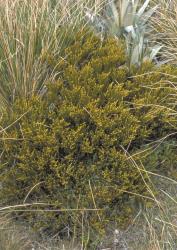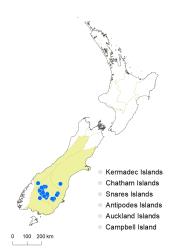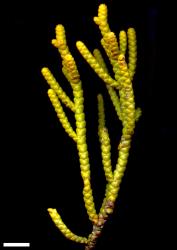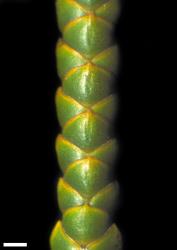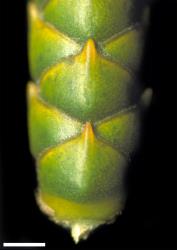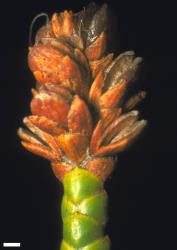- ≡ Hebe demissa G.Simpson, Trans. Roy. Soc. New Zealand 75: 193 (1945)
- ≡ Hebe hectorii var. demissa (G.Simpson) Ashwin in Allan, Fl. New Zealand 1, 931 (1961)
- ≡ Leonohebe hectorii var. demissa (G.Simpson) Heads, Bot. Soc. Otago Newsl. 5: 8 (1987)
- ≡ Hebe hectorii subsp. demissa (G.Simpson) Wagstaff & Wardle, New Zealand J. Bot. 37: 33 (1999)
- = Hebe subulata G.Simpson, Trans. Roy. Soc. New Zealand 79: 427 (1952)
- ≡ Leonohebe subulata (G.Simpson) Heads, Bot. Soc. Otago Newsl. 5: 9 (1987)
- ≡ Hebe hectorii subsp. subulata (G.Simpson) Wagstaff & Wardle, New Zealand J. Bot. 37: 33 (1999)
Leaves broader than long, mostly 1.5–2.5 mm long; apex apiculate to mucronate.
V. hectorii subsp. demissa plants have a short apiculus or mucro to the leaf, whereas leaves of subsp. coarctata and subsp. hectorii are sub-acute, obtuse, or rounded. The distinction is not clearcut in the southern South Island, and plants with a very short mucro can be difficult to place. The distributions of subsp. demissa and subsp. hectorii appear to overlap, but typically subsp. demissa has a more eastern range, whereas most populations of subsp. hectorii are in the west of the region. See Bayly & Kellow (2006) for details.
South Island: Canterbury (south of Waitaki River only), Westland (east of the Main Divide), Otago, Southland.
Penalpine to alpine grassland and shrubland. Recorded elevations range from 615 to 1800 m.
2n = 40 (Bayly & Kellow 2006, as Hebe hectorii subsp. demissa).
For comparison with subsp. hectorii, see notes under that subspecies.



